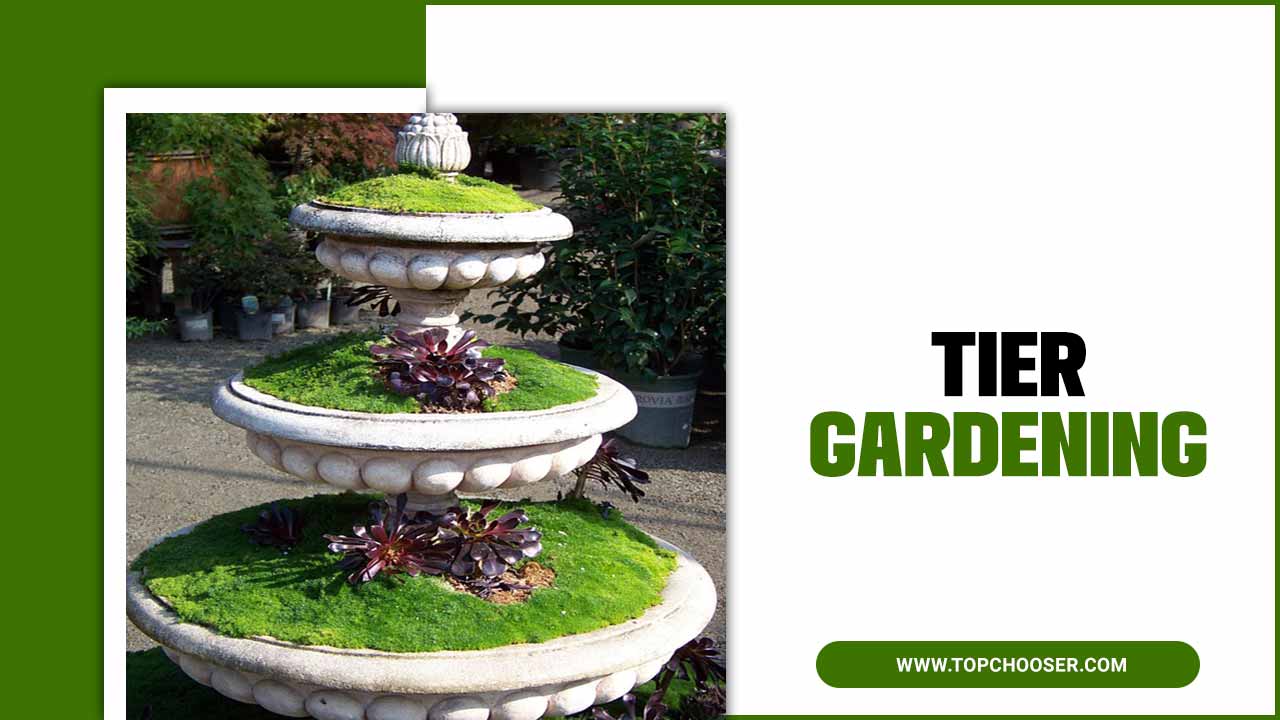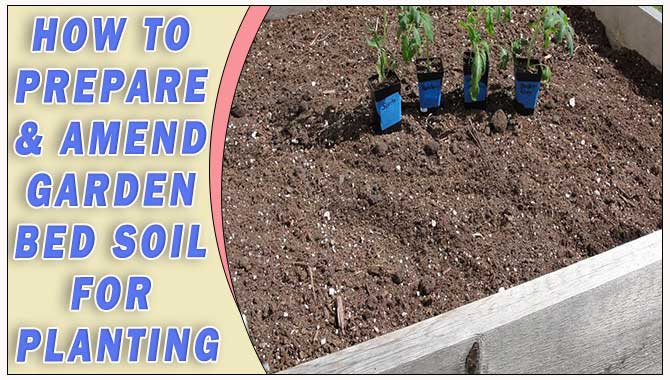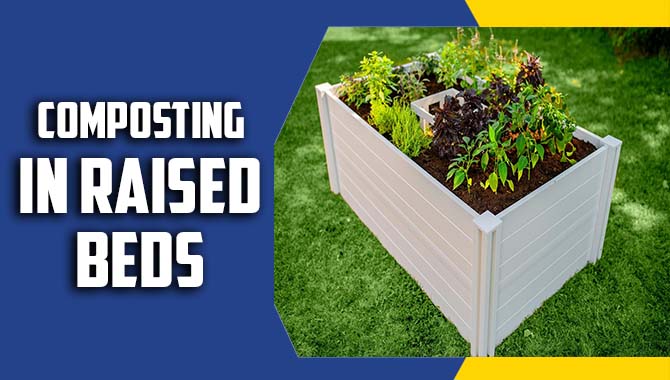Gardening is a wonderful pastime that offers a myriad of benefits, both physical and mental. It provides an outlet for creativity, promotes relaxation, and improves overall well-being.
Building a raised garden bed is an excellent place if you’ve been considering starting a garden. Not only does it offer a practical solution for growing plants in limited spaces, but it can also help you to avoid many of the common problems associated with traditional gardening methods.
We will be delving into the process on how to build a raised garden bed. Whether a seasoned gardener or a beginner, this guide will give you information on the tools and knowledge you need to create your thriving garden. We’ll cover everything from choosing the right location and materials to building the bed and filling it with nutrient-rich soil.
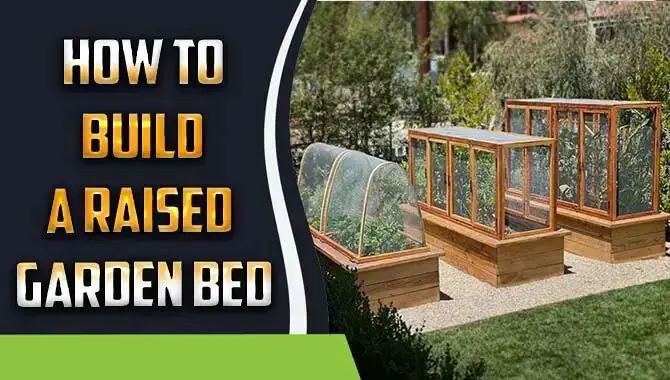
What Is A Raised Garden Bed?

A raised garden bed is a gardening structure elevated above the ground. It is typically constructed from wood or stone and can range in size from small individual plots to large communal gardens. The benefits of using a raised garden bed include improved drainage, better soil quality, and easier access to planting and harvesting.
They also allow for greater control over the growing environment, as you can add specific types of soil or compost to meet the needs of your plants. Additionally, raised garden beds can be used in areas where the soil quality may be poor or contaminated, providing a safe and healthy growing environment for your plants. Overall, a raised garden bed is an excellent option for those looking to start a garden but may not have suitable soil conditions or space on the ground level.
How To Build A Raised Garden Bed – 8 Easy Steps
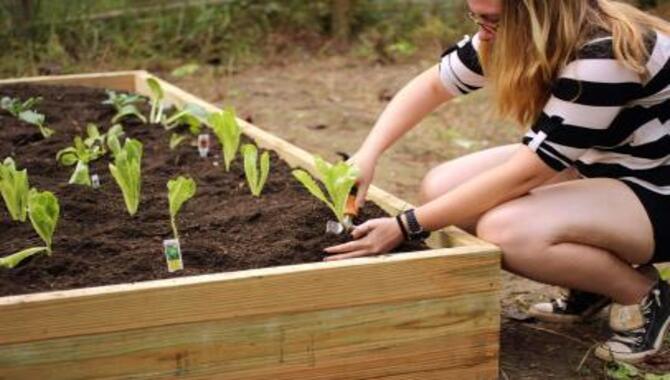
Building a raised garden bed is a great way to grow vegetables and flowers. Not only does it provide you with a dedicated space for gardening, but it also helps to improve soil quality and drainage. Here are eight easy steps on how to build a raised garden bed:
- Choose a location: Find a sunny spot in your yard that is level and has good drainage.
- Gather materials: You will need wood boards, screws, a drill, soil, and plants or seeds.
- Measure and cut the boards: Cut the boards to the desired length and width of your garden bed.
- Assemble the frame: Use screws to attach the boards to form a rectangular frame.
- Add support: If your garden bed is more than one foot tall, add additional support in the centre of the frame.
- Add soil: Fill the garden bed with nutrient-rich soil.
- Plant your seeds or plants: Follow the planting instructions for each type of seed or plant you choose.
- Water regularly: Keep your garden bed moist by watering it regularly.
DIY Raised Garden Bed Design Ideas
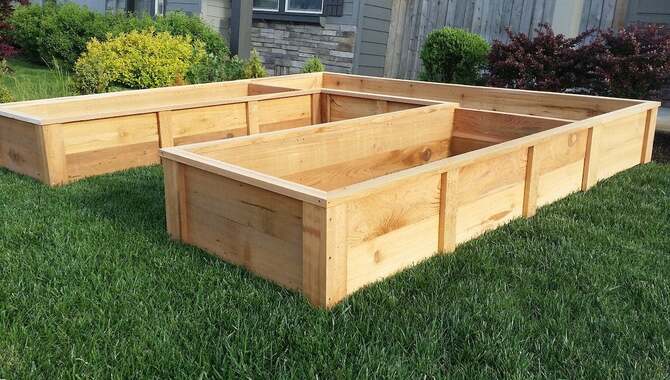
Use high-quality cedar boards instead of pressure-treated lumber for a successful DIY project on raised garden beds. A vegetable garden is a great way to grow delicious veggies like lettuce and spinach.
Ensure proper drainage with much soil mixed with compost and use hardware cloth to keep pests away. Use deck screws instead of nails for durability. An online soil calculator or visit Home Depot for nutrient-rich soil options to calculate how much soil is needed.
Above-Ground Raised Garden Beds
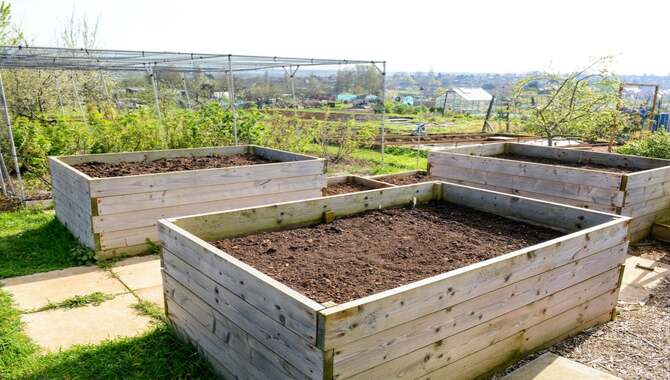
Raised planter boxes are a great alternative to in-ground gardening due to their numerous benefits. Above-ground raised garden beds offer better drainage and soil quality leading to healthier plants and higher yields.
Choosing rot-resistant and high-quality materials such as cedar boards or redwood is important when building your garden bed. Ensure proper moisture and drainage using landscape fabric or hardware cloth, and consider adding trellises for vertical planting options.
Raised Garden Beds With Built-In Seating
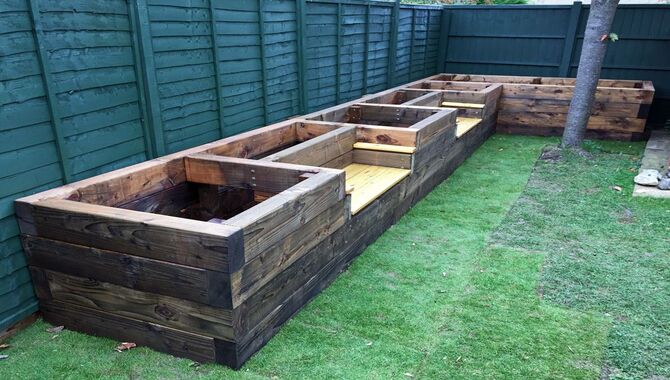
Built-in seating in raised garden beds adds comfort to the gardening experience. Use rot-resistant cedar or redwood and ensure proper drainage. Add cushions for extra comfort while enjoying your herb garden, lettuce bed, or spinach patch. Whether you’re a seasoned gardener or just starting your DIY project, raised garden bed kits with built-in seating can make gardening easy and enjoyable.
Choosing The Right Material For Raised Beds
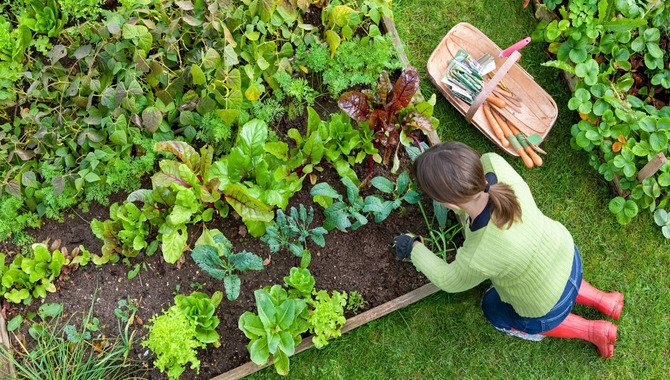
When choosing the right material for raised beds, several factors must be considered. One of the most important considerations is durability. You want a material that will last many years without deteriorating or breaking down. Some common materials used for raised beds include wood, metal, and plastic.
Wood is popular because it is affordable and easy to work with. However, it can also rot over time if not properly treated. Metal is durable and long-lasting, but it can be expensive and may rust over time. Plastic is lightweight and easy to clean but may not be as sturdy as other materials.
Another consideration when choosing the right material for raised beds is drainage. You want a material that allows water to drain easily so your plants don’t become waterlogged. Finally, consider the aesthetic appeal of the material you choose. Raised beds can add a decorative element to your garden, so choose a material that complements your landscaping and adds visual interest to your outdoor space.
What Is The Best Wood For Raised Garden Beds?
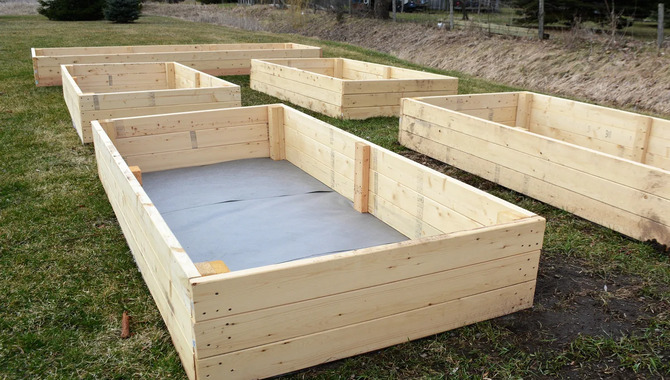
When choosing the best wood for raised garden beds, there are a few factors to consider. First and foremost, you want to select a durable wood resistant to rotting, as it will be exposed to moisture and soil. Cedar and redwood are popular due to their natural resistance to decay and pests.
They also have a pleasing aesthetic that can add to the overall look of your garden. Other options include cypress, which has natural preservatives that make it resistant to decay, or composite wood, made from a combination of recycled plastic and wood fibres and is virtually maintenance-free. Ultimately, the best choice will depend on your personal preferences and budget, but selecting a high-quality wood will ensure that your raised garden beds last for years.
How Deep Should Raised Garden Beds Be For Vegetables?

Regarding raised garden beds for vegetables, depth is an important factor. The ideal depth will depend on the types of vegetables you plan to grow and their root systems. Generally, a depth of at least 12 inches is recommended for most vegetables.
This allows for sufficient soil volume and proper drainage, which can help promote healthy plant growth. However, if you plan to grow vegetables with deeper root systems, such as carrots or parsnips, you may want to consider a bed of 18 inches or more. Ultimately, the key is to choose a depth that provides enough space for your plants to thrive and produce a bountiful harvest.
What Should I Put On The Bottom Of My Raised Garden Bed?
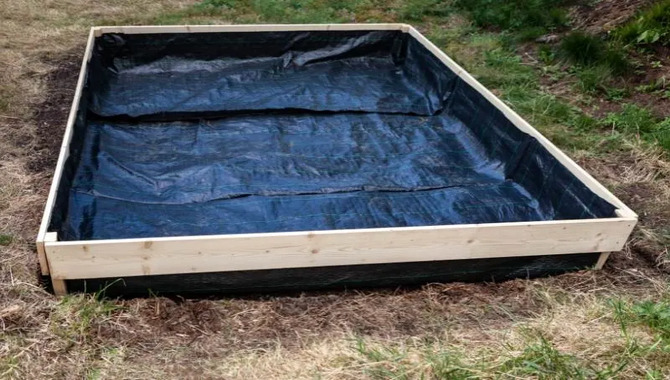
When building a raised garden bed, it is important to consider what to put on the bottom to ensure proper drainage and prevent weeds from growing into the soil. One option is to lay down a layer of landscape fabric or newspaper to help control weed growth.
Another option is to use a layer of gravel or small rocks to provide drainage and support for the soil above it. Some gardeners also choose to add a layer of compost or other organic material on top of the gravel or landscape fabric, which can help improve soil fertility and water retention. Ultimately, choosing what to put on the bottom of your raised garden bed will depend on your specific gardening needs and preferences.
Tips For Maintaining Your Raised Garden Bed
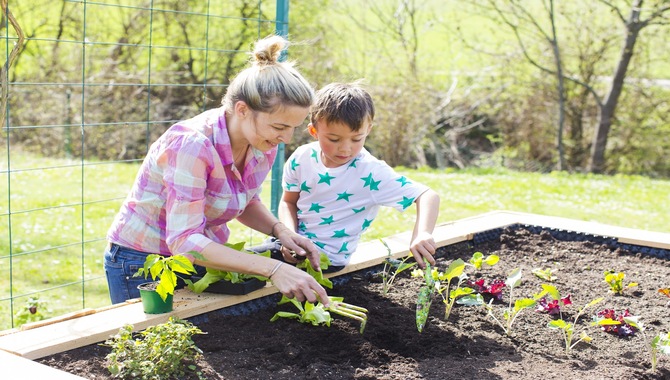
Maintaining your raised garden bed is crucial for its success. Keep the soil moist by watering regularly and maintaining nutrient levels with organic fertilizer or compost. Maintaining a raised garden bed can be a rewarding experience, but it does require some effort to keep your plants healthy and thriving. Here are some tips for maintaining your raised garden bed:
- Water regularly: Water your plants regularly, especially during hot and dry weather. A good rule of thumb is to water deeply once or twice a week rather than giving them frequent shallow watering.
- Weed often: Look for weeds competing with your plants for nutrients and water. Pull them out when you see them to prevent them from taking over.
- Add compost: Regularly adding compost to your raised garden bed can help improve soil quality and provide necessary nutrients for your plants.
- Monitor for pests: Watch for pests like aphids or caterpillars that can damage your plants. Use natural pest control methods like neem oil or companion planting to deter them.
- Rotate crops: Rotate your crops each season to prevent soil-borne diseases and nutrient depletion. This involves planting different types of crops in different areas of the garden bed each year. By following these tips, you can maintain a healthy and productive raised garden bed all year round.
Watering Your Raised Garden Bed
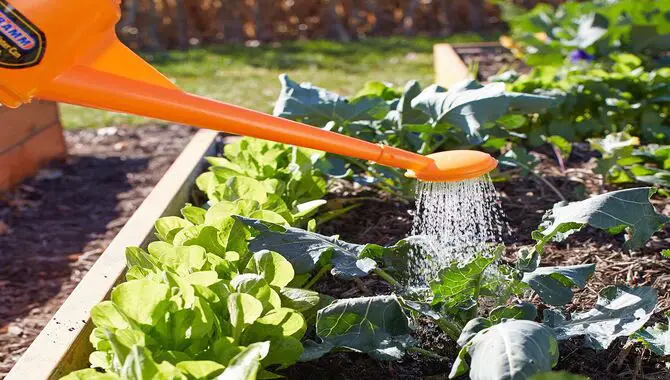
Watering your raised garden bed is essential to maintaining a healthy and thriving garden. Because raised beds tend to dry out more quickly than traditional gardens, watering them regularly and deeply is important. This will help ensure the plants have enough moisture to grow and produce a bountiful harvest.
When watering your raised garden bed, it is best to water early in the morning or late in the evening when temperatures are cooler. This will help prevent evaporation and ensure the plant’s roots absorb the water.
You may also want to consider using a drip irrigation system or soaker hose, which can help conserve water and deliver it directly to the plants’ roots. With proper watering techniques, your raised garden bed can flourish and provide fresh, delicious produce all season long.
Fertilizing Your Raised Garden Bed
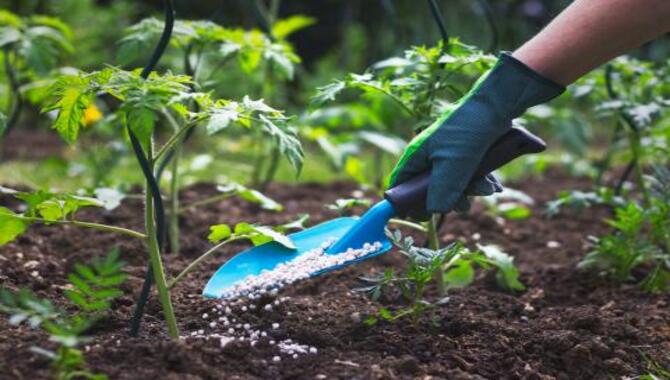
Fertilizing your raised garden bed is important in ensuring your plants grow healthy and strong. Since the soil in a raised bed can be more compact than traditional garden soil, adding nutrients to the ground is important to help the plants thrive. Several options for fertilizing your raised garden bed include organic and synthetic fertilizers.
Organic options include compost, manure, and fish emulsion, while synthetic options typically come in pellet or liquid form. It is important to follow instructions carefully when applying fertilizer and to avoid over-fertilizing, which can damage the plants. Proper fertilization allows you to enjoy a bountiful harvest of fresh, healthy produce from your raised garden bed.
Pest And Disease Control For Raised Garden Beds

Regarding gardening in raised beds, pest and disease control is critical to maintaining healthy plants. One of the best ways to prevent problems and diseases from taking hold is to practice good garden hygiene. This includes removing any dead or diseased plant material from the bed and keeping the area around the bed free of debris.
Additionally, you may want to consider using natural pest control methods. Such as companion planting or introducing beneficial insects like ladybugs or praying mantises. If you need to use pesticides, be sure to choose ones safe for use in vegetable gardens. And of course, follow all instructions carefully. By taking these steps, you can ensure that your raised garden beds remain healthy and productive.
Benefits Of Raised Garden Beds
Raised garden beds offer several benefits for both novice and experienced gardeners alike. One of the main advantages is that they allow for better soil drainage, which can help prevent water logging and root rot. Additionally, raised garden beds provide better control over the soil quality, as you can add specific nutrients and materials to create an ideal growing environment.
They also make it easier to manage weeds and pests, as the elevated design can help keep them at bay. Another benefit of raised garden beds is that they are more accessible for individuals with mobility issues, requiring less bending and kneeling than traditional ground-level gardens. Overall, raised garden beds are a versatile and practical option for cultivating a thriving garden.
Conclusion
Building a raised garden bed is an excellent way to grow your produce and beautify your outdoor space. It also has several benefits, like improved drainage, better soil quality, and easier accessibility, to name a few. Building a raised garden bed is easy and fun whether you are new to gardening or have been doing it for years.
Follow our eight simple steps on how to build a raised garden bed and get ready to enjoy the fruits of your labour in no time. By following the steps outlined in this guide and incorporating your creativity and preferences, you can design and build a raised garden bed that meets your specific needs and enhances the beauty and productivity of your outdoor space.
Frequently Asked Questions:
[rank_math_rich_snippet id=”s-7b66eb43-ee22-4513-aff5-c23336f0a724″]

I am passionate about home engineering. I specialize in designing, installing, and maintaining heating, ventilation, and air conditioning systems. My goal is to help people stay comfortable in their homes all year long.

